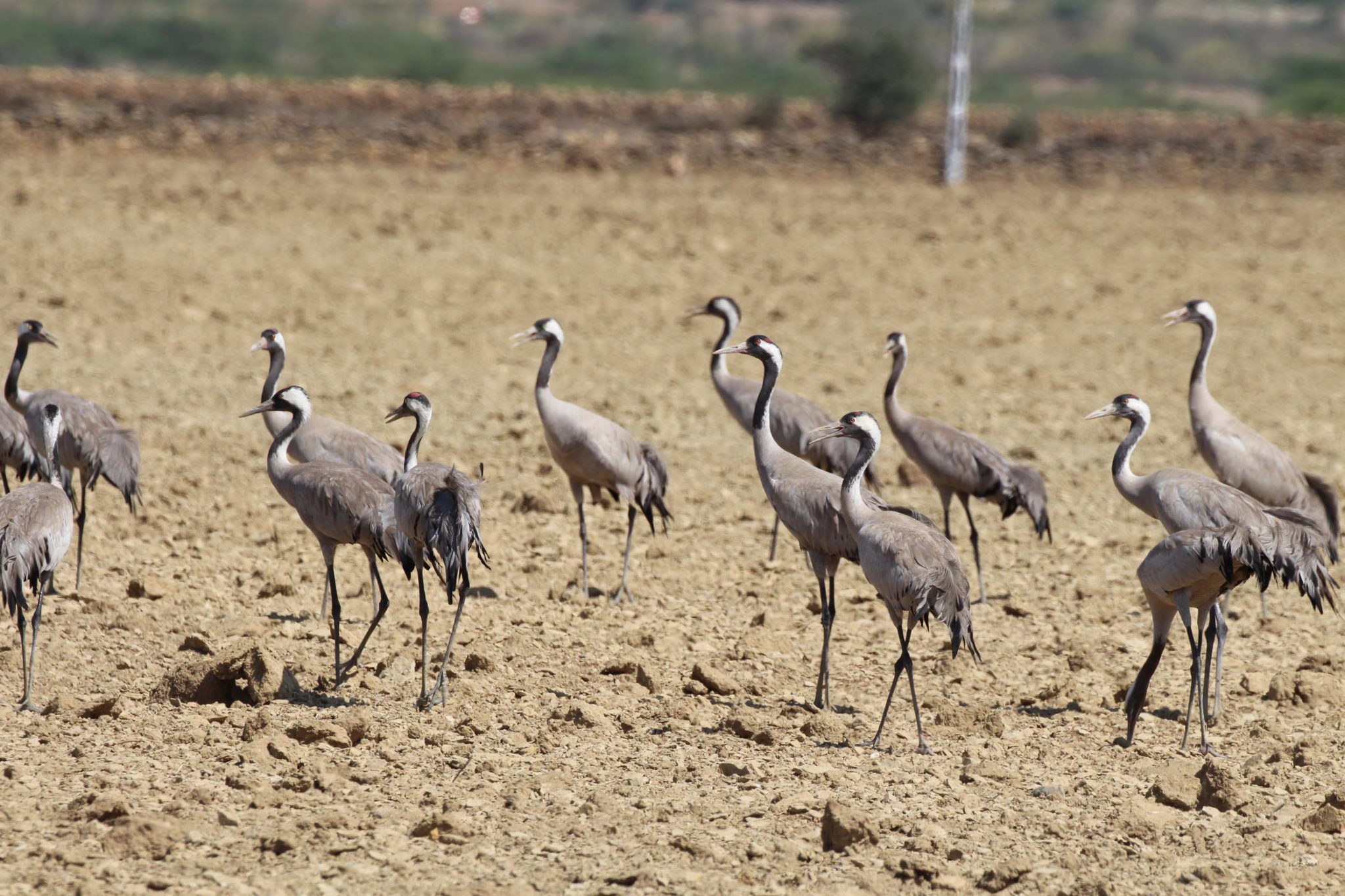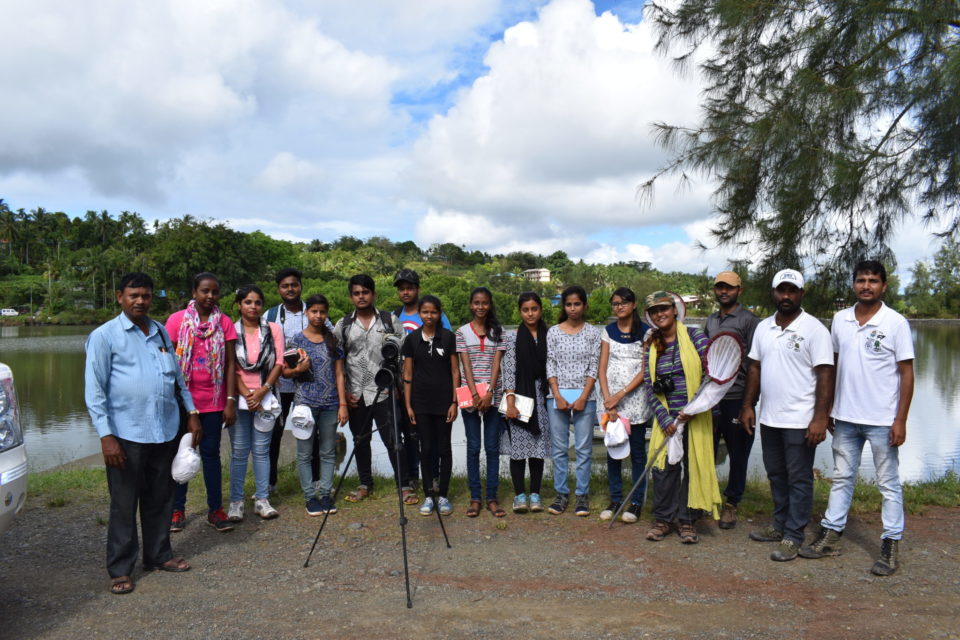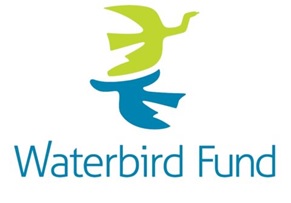
Join us for the Asian Waterbird Census 2021
-
Asian Waterbird Census
The Asian Waterbird Census (AWC) is part of the global International Waterbird Census (IWC). This citizen-science programme is supporting conservation and management of wetlands and waterbirds worldwide.
The recommended dates for the AWC are 2 – 17 January 2021, covering two weeks and three weekends, when we should encourage you to count waterbirds. These dates are for guidance only and counts from from any date in December 2020 or January and February 2021 are very welcome.

Participate in the AWC 2021 count programme!
Your information helps to promote the designation and management of internationally important sites such as nationally protected areas, Ramsar Sites, Western/Central Asian Site Network for Siberian Cranes and Other Waterbirds, East Asian – Australasian Flyway Network Sites and Important Bird and Biodiversity Areas (IBAs). As well this helps in identifying and protecting new sites of importance for waterbirds. The result of the census and information are also used to promote national waterbird and wetland conservation and international cooperation along the Central Asian Flyway and East Asian – Australasian Flyway.
Guidance and Reporting
If you have participated in a previous count for a particular site, kindly cover the same site this year and report on it using the latest 2021 count and wetland assessment submission forms. We encourage you to cover as many sites as possible and encourage more participation. Submission of forms to the appropriate coordinator should be done by end February 2021 at the latest.
Important Note on Covid-19 Pandemic:
While participating in AWC, please ensure that you adhere to COVID-19 guidelines provided by national government and state/provincial authorities. The AWC coordinators are requested to inform the participants about the state/province specific restrictions/guidelines to be followed during the census. Participants are requested to maintain a distance of at least 2 meters/six feet from other participants. Each participant must carry their personal sanitizer and wear a face mask to ensure safety of the group. Participants may carry their own birding equipment such as binoculars, cameras and AWC Count and Wetland Assessment forms, so as to reduce contact between people to a minimum.
Protocol for waterbird counting : A general introduction to counting waterbirds for the International Waterbird Census.
Digitising Site Boundaries : Drawing the boundaries of a site or count area on a map is key to ensuring consistent coverage from year to year. This is a simple guidance to the various options to make digital boundaries for sites and submit these with your counts to your coordinator.
Counting and reporting across Asia-Australasia
(for India, please see next section)
1. AWC submissions through national count forms/scheme and AWC Wetland Assessment Form 2021 in Google Form
AWC participants should contact their national/regional coordinators to seek information on forms and protocols to be followed. Check here for contact details of your AWC National/regional coordinator.
In addition to the count information, for AWC 2021, we continue to use the Wetland Assessment Form for participants to submit standardized information on the status and potential threats to wetlands and waterbirds observed on their visit. This complements the waterbird count forms you normally submit. We encourage you to submit an entry for each site you cover. National/regional coordinators will be able to summarize these in their reports and we intend to prepare an annual regional summary.
2. AWC Count & Wetland Assessment Entry Form 2021 (Excel Format)
We have updated the AWC Count & Wetland Assessment Entry Form (Excel format) for 2021 with the latest list of sites uploaded in the IWC online database. Here the counter can use the dropdown menu option to enter the waterbird species.
We also request for each site you cover, you kindly submit a simple outline/boundary map of the actual count area. Guidance to produce the map is here.
Counting and reporting in India
The AWC is jointly coordinated by the Bombay Natural History Society and Wetlands International. To help prioritise sites to be covered, a reference list of internationally important AWC sites and wetland IBAs in India is available for your guidance.
Data submission can be in one of three ways:
1. AWC India Count and Wetland Assessment Entry Form (Excel format)
For this year, we are providing two options of the AWC India Count and Wetland Assessment Entry Form. In the first, the counter can use the dropdown menu option to enter the waterbird species. In the latter, these are pre-entered as a flat form and so only need for the number to be entered. Either form can be used.
AWC India 2021 Count and assessment form (empty)
AWC India 2021 Count and assessment form (species filled)
We also request for each site you cover, you kindly submit a simple outline/boundary map of the actual count area. Guidance to produce the map is here.
2. AWC India Wetland Assessment 2019 (MS Word)
This Word form is only for those unable to use the Excel format. This form remains unchanged from AWC 2019. We also request for each site you cover, you kindly submit a simple outline/boundary map of the actual count area. Guidance to produce the map is here.
Kindly provide completed forms through your State Coordinator, with a copy to [email protected] and [email protected]. If there is no State Coordinator, kindly send them directly to [email protected] and [email protected].
3. AWC India Count and Wetland Assessment Form 2021 (Google Form)
For those familiar with eBird (and its mobile application), since AWC 2016, we have introduced an online data submission through the eBird India platform developed in collaboration with Bird Count India and Bombay Natural History Society. For each wetland covered, upload your counts to eBird and fill out the Google form AWC India Wetland Assessment Form 2021.
Do note that only eBird submissions accompanied by this form will be accepted and included in the national AWC overview. So kindly complete the regular eBird count and this AWC India Wetland Assessment Form 2020 for each site separately. Please share your eBird checklists with our eBird handle ‘awcindia’.
We also request for each site you cover, you kindly submit a simple outline/boundary map of the actual count area. Guidance to produce the map is here.
Participants are requested to submit all information by end of February 2021. If you have any questions, please contact [email protected] and [email protected].
Raising awareness for waterbird and wetland conservation
We encourage you to actively raise local awareness of waterbird and wetland conservation issues around the census through contributing to or publishing news items and articles in the print and electronic media. Kindly share links to articles to [email protected], so we can help to promote it.
We also encourage you to use social media (Facebook, Twitter, Instagram, Linked In, etc.) to publicize the census and your findings. We encourage you to include the hashtags #WaterbirdsCount, #AWC or #AsianWaterbirdCensus where possible and tag us on @WetlandsInt @EAAFP so we can help to share this widely too. For your posts in India, do tag @WetlandsInt_SA and @BNHSIndia.
Generating support for monitoring

Through the global Waterbird Fund www.waterbird.fund, we can now receive dedicated funds to channel to our network to fill geographic gaps, strengthen local capacity to implement monitor waterbirds as well as remote wetlands that are not being regularly counted. We aim to target new funding sources to secure contributions to support our network, including conservation organisations, governments, birders, hunters and their clubs and associations, foundations, as well as the public with an interest in waterbirds and the environment. Do consider promoting the fund and making a donation to help strengthening monitoring in the region.
We invite your active participation to make this special year count for waterbird and wetland conservation on the ground!
We trust your annual waterbird count and wetland assessment help you to raise local awareness about the importance of conserving wetlands and their waterbirds while contributing to the world’s longest running biodiversity monitoring programme.

